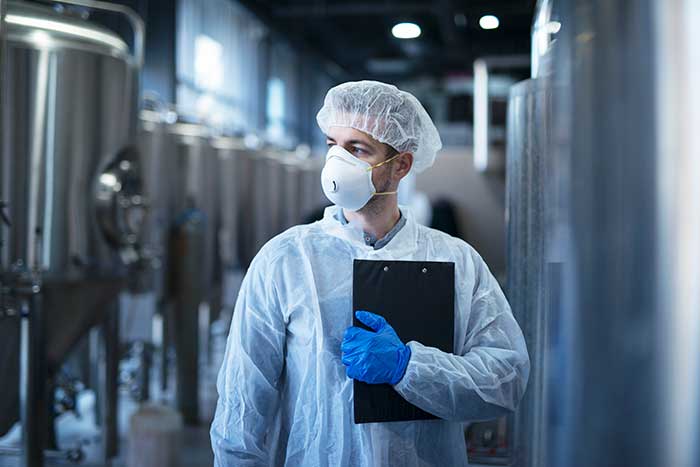
When we think about workplace safety, many of us focus on visible hazards like machinery, slippery floors, or the potential for physical accidents. But there’s another crucial aspect of workplace health that often goes unnoticed—occupational hygiene. While the term might sound complex, it’s simply about making sure the environment workers are in is safe for their long-term health. In this blog post, we’ll break down what occupational hygiene is, why it’s important, and how it can make a huge difference in ensuring that workers return home healthy every day.
Understanding Occupational Hygiene
Occupational hygiene refers to the science and practice of anticipating, recognizing, evaluating, and controlling workplace conditions that may cause workers to experience ill health or discomfort. These conditions may include exposure to hazardous substances like chemicals, physical hazards like noise or temperature extremes, biological agents like viruses or bacteria, and ergonomic hazards such as poor workstation design.
The goal of occupational hygiene is clear: to prevent work-related illness or injury by addressing hazards before they cause harm. It’s about identifying potential risks, assessing their impact, and implementing controls to reduce or eliminate exposure.
Why is Occupational Hygiene Important?
As industries evolve, so do the potential risks workers face. Occupational hygiene is more critical than ever for a number of reasons:
Health Protection: Many workplace hazards, if left unchecked, can lead to long-term health problems. For example, exposure to chemicals like asbestos or harmful fumes can lead to respiratory diseases or even cancer. Noise exposure can result in hearing loss, and poor ergonomics can lead to musculoskeletal disorders. Occupational hygiene helps reduce these risks by identifying and controlling exposure.
Compliance with Regulations: Governments around the world have set regulations and standards to protect workers from occupational health risks. In many countries, organizations are legally required to implement occupational hygiene practices to meet these standards. Non-compliance can lead to legal consequences, financial penalties, and damage to a company’s reputation.
Improved Productivity: Healthy workers are more productive. By preventing work-related illness or injuries, employers can reduce absenteeism, improve morale, and boost overall workplace efficiency.
Long-Term Cost Savings: Investing in occupational hygiene can save a business a great deal of money in the long run. By preventing health problems, companies can avoid high medical costs, workers’ compensation claims, and potential lawsuits related to workplace injuries or diseases.
The Process of Occupational Hygiene
There are four primary steps in the practice of occupational hygiene, each of which plays a critical role in ensuring worker safety:
1. Hazard Identification
The first step is identifying potential hazards in the workplace. These hazards can be physical (like excessive noise), chemical (such as exposure to solvents or dust), biological (like bacteria or viruses), or ergonomic (such as poorly designed workstations). A thorough hazard assessment allows hygienists to understand what workers might be exposed to.
2. Risk Assessment
Once hazards are identified, the next step is assessing the risk. This involves evaluating how much exposure workers are likely to have to these hazards and how dangerous they are. It can involve measuring air quality, monitoring noise levels, or analyzing chemical concentrations in the workplace. The aim is to understand the potential health impacts based on the level of exposure.
3. Control Measures
After assessing the risks, it’s time to implement control measures. The goal here is to reduce or eliminate exposure to hazardous conditions. There are several ways to do this:
Engineering Controls: These are changes to the physical environment, such as installing better ventilation systems or using noise-reducing equipment.
Administrative Controls: These include policies like rotating workers to reduce exposure time or scheduling tasks to limit hazardous activities.
Personal Protective Equipment (PPE): In cases where it’s not possible to eliminate the hazard, providing workers with PPE (such as gloves, masks, or hearing protection) can be a crucial safeguard.
4. Monitoring and Review
The work doesn’t stop once the hazards are controlled. Occupational hygienists continually monitor the workplace to ensure that health risks are minimized and control measures remain effective. This may include routine air quality checks, noise assessments, and regular review of safety protocols.
Occupational Hygiene in Action
To see how occupational hygiene works in practice, let’s look at a couple of examples:
Construction Sites: Workers on construction sites may be exposed to harmful dust, asbestos, or chemicals. Occupational hygienists would assess the levels of exposure and implement dust control measures, such as water sprays or air filtration systems. Workers might be provided with PPE like masks and goggles, and the site may be regularly monitored to ensure the levels of dangerous substances stay below legal limits.
Offices: In an office setting, ergonomics often plays a major role in occupational hygiene. Workers may face musculoskeletal disorders from poor workstation design, leading to back pain or repetitive strain injuries. Occupational hygiene specialists would assess the ergonomic setup of workstations, suggest improvements (like adjustable chairs and proper desk heights), and encourage workers to take breaks to reduce strain.
Manufacturing Plants: Employees in factories might face exposure to high levels of noise or hazardous chemicals. Occupational hygienists would assess the decibel levels of machinery and provide hearing protection. For chemical exposure, they might recommend better ventilation systems or changes in the manufacturing process to reduce the release of harmful substances.
The Future of Occupational Hygiene
As workplaces evolve, the field of occupational hygiene continues to adapt. New technologies and materials, along with evolving environmental and health regulations, present fresh challenges and opportunities. Occupational hygienists will need to stay on top of emerging risks, such as the impact of new chemicals or the spread of infectious diseases in communal workplaces.
Additionally, the growing emphasis on mental health in the workplace may lead to more focus on the psychological aspects of occupational hygiene, such as managing stress, ensuring a healthy work-life balance, and promoting overall well-being.
Conclusion
Occupational hygiene is an essential component of creating a safe and healthy workplace. By identifying hazards, assessing risks, and implementing effective control measures, businesses can ensure that their employees remain healthy and productive. Not only does this contribute to compliance with legal requirements, but it also helps in building a positive, thriving workplace culture where employees feel valued and protected. Whether in construction, healthcare, or office environments, occupational hygiene plays a pivotal role in safeguarding the long-term health of workers.
At the end of the day, it’s about making sure that everyone, from the factory floor to the office desk, goes home healthy—and that’s something we should all strive for.



